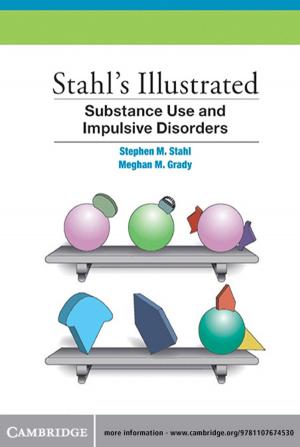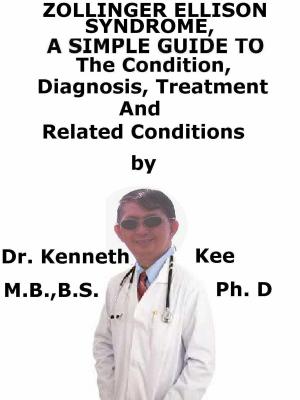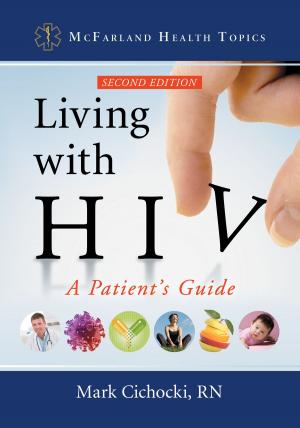The Sydney Handbook of Anxiety Disorders
A Guide to the Symptoms, Causes and Treatments of Anxiety Disorders
Nonfiction, Health & Well Being, Medical, Nursing, Mental Health, Psychology, Clinical Psychology, Ailments & Diseases| Author: | ISBN: | 9780994214539 | |
| Publisher: | The University of Sydney | Publication: | September 29, 2015 |
| Imprint: | The University of Sydney | Language: | English |
| Author: | |
| ISBN: | 9780994214539 |
| Publisher: | The University of Sydney |
| Publication: | September 29, 2015 |
| Imprint: | The University of Sydney |
| Language: | English |
Anxiety disorders are common psychiatric conditions with a devastating effect on quality of life that is often underestimated. Unfortunately, anxiety is as misunderstood among patients and health practitioners as it is common. While more than 14 percent of Australians exhibit symptoms of anxiety disorders, only half seek treatment. Of great concern is the fact that 40 percent of those who do seek treatment receive misguided advice.
Despite this alarming news, there is hope. The Australian mental health community, particularly the faculty of the University of Sydney, is rallying around anxiety research and clinical treatment. The Sydney Handbook of Anxiety Disorders presents the latest and most comprehensive information on the diagnosis and treatment of anxiety.
This guide clearly lays out a biopsychosocial model for understanding anxiety that involves biological activity of the brain, psychological theories on attachment, conditioning, cognition and recognition of social triggers. New and traditional psychological and pharmacological treatment options are meticulously analysed in simple language, while case studies give real-life examples of diagnosis and treatment plans.
The Sydney Handbook of Anxiety Disorders shares the experience and expertise of the best medical doctors and mental health specialists in Australia. The result is a must-read manual for anxiety sufferers and those who treat them.
From the Back Cover:
When it comes to anxiety disorders, Australians are struggling. More than 14 percent of Australians exhibit symptoms of debilitating anxiety. Anxiety is now more common than depression, but its symptoms, diagnosis, and treatments are less widely understood. The Sydney Handbook of Anxiety Disorders fills a significant knowledge gap with the latest information about anxiety, compiled by top researchers and clinicians at the University of Sydney.
Rather than focusing on a single facet of anxiety, this guide presents a comprehensive biopsychosocial model to diagnosis and treatment that includes brain activity, psychological theory and cognitive behavioural therapy, and various pharmacological treatment options. Written in clear language, respectful of Australia’s multicultural society, and filled with personal case studies and real-life anecdotes, it’s designed to educate both patients and health practitioners.
Anxiety disorders aren’t going away. It’s time to recognise and understand this growing mental health crisis.
Table of Contents:
Part I: What is Anxiety
Part II: Physiology of the Normal Stress Response
Part III: Genetics and Gene-Environment Interaction
Part IV: Developmental Antecedents of Anxiety
Part V: Neurobiology of Anxiety Disorders
Part VI: Cognitive Theory
Part VII: Assessment of Anxiety Disorders
Part VIII: Behaviour Therapy
Part IX: Cognitive Therapy
Part X: Cognitive Behavioural Therapy
Part XI: Pharmacotherapy
Part XII: Review and Putting It All Together
Anxiety disorders are common psychiatric conditions with a devastating effect on quality of life that is often underestimated. Unfortunately, anxiety is as misunderstood among patients and health practitioners as it is common. While more than 14 percent of Australians exhibit symptoms of anxiety disorders, only half seek treatment. Of great concern is the fact that 40 percent of those who do seek treatment receive misguided advice.
Despite this alarming news, there is hope. The Australian mental health community, particularly the faculty of the University of Sydney, is rallying around anxiety research and clinical treatment. The Sydney Handbook of Anxiety Disorders presents the latest and most comprehensive information on the diagnosis and treatment of anxiety.
This guide clearly lays out a biopsychosocial model for understanding anxiety that involves biological activity of the brain, psychological theories on attachment, conditioning, cognition and recognition of social triggers. New and traditional psychological and pharmacological treatment options are meticulously analysed in simple language, while case studies give real-life examples of diagnosis and treatment plans.
The Sydney Handbook of Anxiety Disorders shares the experience and expertise of the best medical doctors and mental health specialists in Australia. The result is a must-read manual for anxiety sufferers and those who treat them.
From the Back Cover:
When it comes to anxiety disorders, Australians are struggling. More than 14 percent of Australians exhibit symptoms of debilitating anxiety. Anxiety is now more common than depression, but its symptoms, diagnosis, and treatments are less widely understood. The Sydney Handbook of Anxiety Disorders fills a significant knowledge gap with the latest information about anxiety, compiled by top researchers and clinicians at the University of Sydney.
Rather than focusing on a single facet of anxiety, this guide presents a comprehensive biopsychosocial model to diagnosis and treatment that includes brain activity, psychological theory and cognitive behavioural therapy, and various pharmacological treatment options. Written in clear language, respectful of Australia’s multicultural society, and filled with personal case studies and real-life anecdotes, it’s designed to educate both patients and health practitioners.
Anxiety disorders aren’t going away. It’s time to recognise and understand this growing mental health crisis.
Table of Contents:
Part I: What is Anxiety
Part II: Physiology of the Normal Stress Response
Part III: Genetics and Gene-Environment Interaction
Part IV: Developmental Antecedents of Anxiety
Part V: Neurobiology of Anxiety Disorders
Part VI: Cognitive Theory
Part VII: Assessment of Anxiety Disorders
Part VIII: Behaviour Therapy
Part IX: Cognitive Therapy
Part X: Cognitive Behavioural Therapy
Part XI: Pharmacotherapy
Part XII: Review and Putting It All Together















